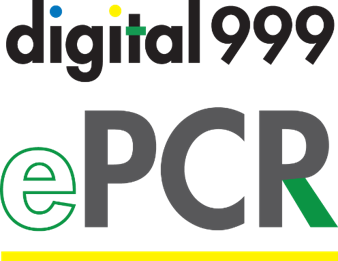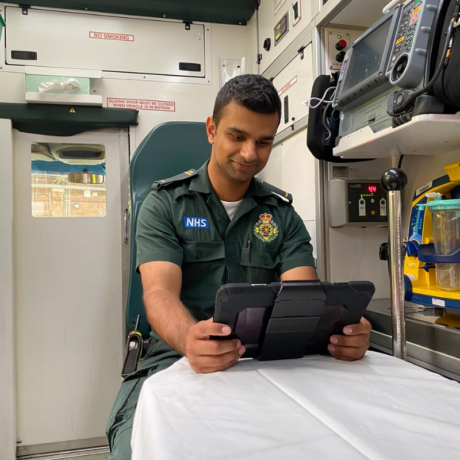Our Digital 999 programme -ePCR
Our Digital 999 Programme supports the Service’s Digital strategy to implement the right technology to improve and manage our systems in a more efficient and effective way.
The current Patient Report Forms (PRFs) are now being replaced with an electronic Patient Care Record (ePCR) from 2020: which has resulted in a significant reduction in paper.
A trial began in July 2020 which saw a group of 150 medics using ePCR – followed by a full rollout in November.
electronic Patient Care Record (ePCR)
As part of our digital transformation strategy, we replaced the paper-based patient report form (PRF with an electronic Patient Care Record (ePCR) from autumn 2020.

Full roll out has started and staff can now use ePCR on their iPads during their working shift and once their training has been completed.
We are continuing to monitor ePCR to ensure there are no issues and no risk to any patients during the process.
Emergency Departments and other receiving departments will no longer receive a paper PRF at the point of handover, but will access the ePCR patient record by a weblink or a URL through a London Ambulance Service-provisioned portal.
EPCR brings with it a number of benefits, including:
- Better patient information to LAS teams online and on the phone in both 111 and 999 services, supporting clinical staff in determining the most appropriate clinical response
- Better patient information to LAS teams on scene, supporting clinical staff in determining the most appropriate clinical response and, if is necessary to take the patient to hospital or another healthcare setting
- Improved visibility of patient details prior to arrival at hospital.
We are committed to working with our partners to continue to enhance the level of integration across our key areas of care in London.
The next step on the Digital 999 journey will be to deliver a new Computer Aided Dispatch (CAD) system, which will support the handling of 999 calls as well as the dispatch and management of ambulances and clinicians to incidents.
Work is well underway with our teams and the new CAD is planned for implementation in 2022.

Follow us on social media: